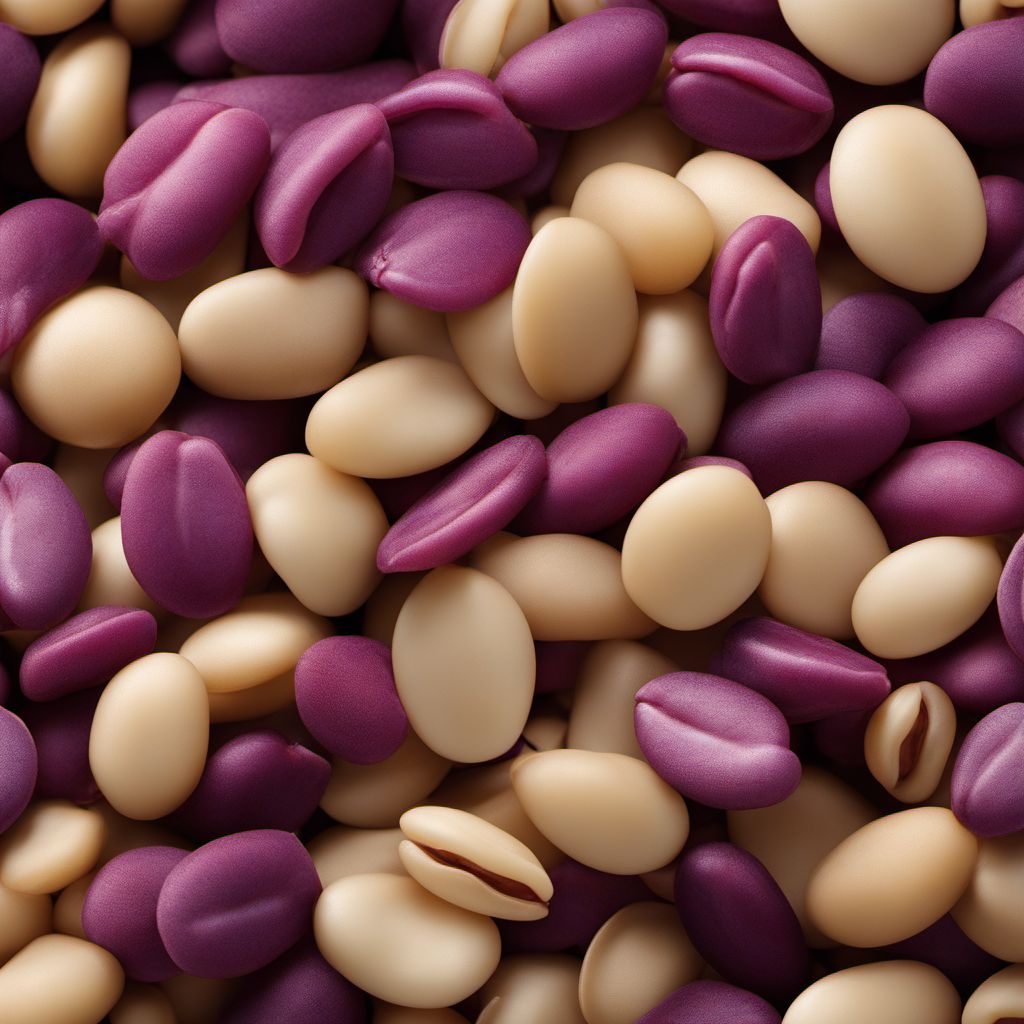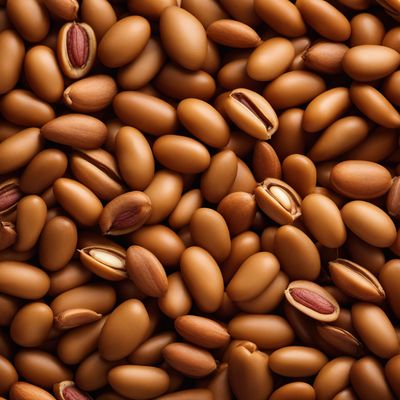
Ingredient
Lablab beans (without pods)
The Protein Powerhouse
Lablab beans are large, oval-shaped beans that are typically ivory or pale green in color. They have a creamy texture and a slightly nutty flavor. These beans are commonly used in Indian, African, and Southeast Asian cuisines.
Origins and history
Lablab beans have a long history of cultivation and consumption in various parts of the world. They are believed to have originated in Africa and have been grown for thousands of years. Lablab beans are highly valued for their nutritional content and are a staple in many traditional dishes.
Nutritional information
Lablab beans are a rich source of protein, dietary fiber, and essential minerals like iron and potassium. They are also low in fat and calories, making them a healthy choice for those looking to incorporate more plant-based protein into their diet.
Allergens
Lablab beans may cause allergic reactions in some individuals, particularly those with legume allergies. It is advisable to exercise caution and consult a healthcare professional if you have any known allergies.
How to select
When selecting lablab beans, choose beans that are plump, firm, and free from any signs of mold or damage. Avoid beans that are discolored or have a shriveled appearance. Fresh lablab beans should have a vibrant color and a glossy surface.
Storage recommendations
To store lablab beans, remove them from their pods and place them in a breathable container or bag. Store them in a cool, dry place away from direct sunlight. Properly stored lablab beans can last for several months.
How to produce
Lablab beans can be grown in a variety of climates, but they thrive in warm, tropical regions. They require well-drained soil and regular watering. It is important to provide support for the climbing vines to ensure proper growth and yield.
Preparation tips
Lablab beans can be cooked in a variety of ways, including boiling, steaming, or sautéing. They can be used in soups, stews, curries, or salads. Lablab beans can also be ground into flour or sprouted for added nutritional benefits.
Culinary uses
Lablab beans are commonly used in Indian, African, and Southeast Asian cuisines. They are often used in curries, dals, or side dishes. In some cultures, lablab beans are also used to make desserts or sweet snacks.
Availability
Lablab beans are commonly available in India, Africa, Southeast Asia, and parts of the Caribbean.
More ingredients from this category » Browse all

Jack beans (without pods)
The Versatile Legume: Unveiling the Wonders of Jack Beans

Borlotti or other common beans (without pods)
The Versatile Legume: Borlotti Beans

Black eyed peas (without pods)
The Versatile Legume: Black Eyed Peas

Monantha vetches (without pods)
The Versatile Monantha Vetches

Mung beans (without pods)
The Mighty Mung: Unlocking the Power of Mung Beans

Black gram (fresh seeds)
The Nutritional Powerhouse: Fresh Black Gram Seeds

Runner beans (without pods)
The Vibrant Green Delight: Unveiling the World of Runner Beans

Broad beans (without pods)
The Versatile Legume

Rice beans (without pods)
The Versatile Rice Bean

Guar beans (without pods)
Versatile Legume Powerhouse

Ervils (without pods)
Delicate Green Gems

Tepary bean (fresh seeds)
The Resilient Legume